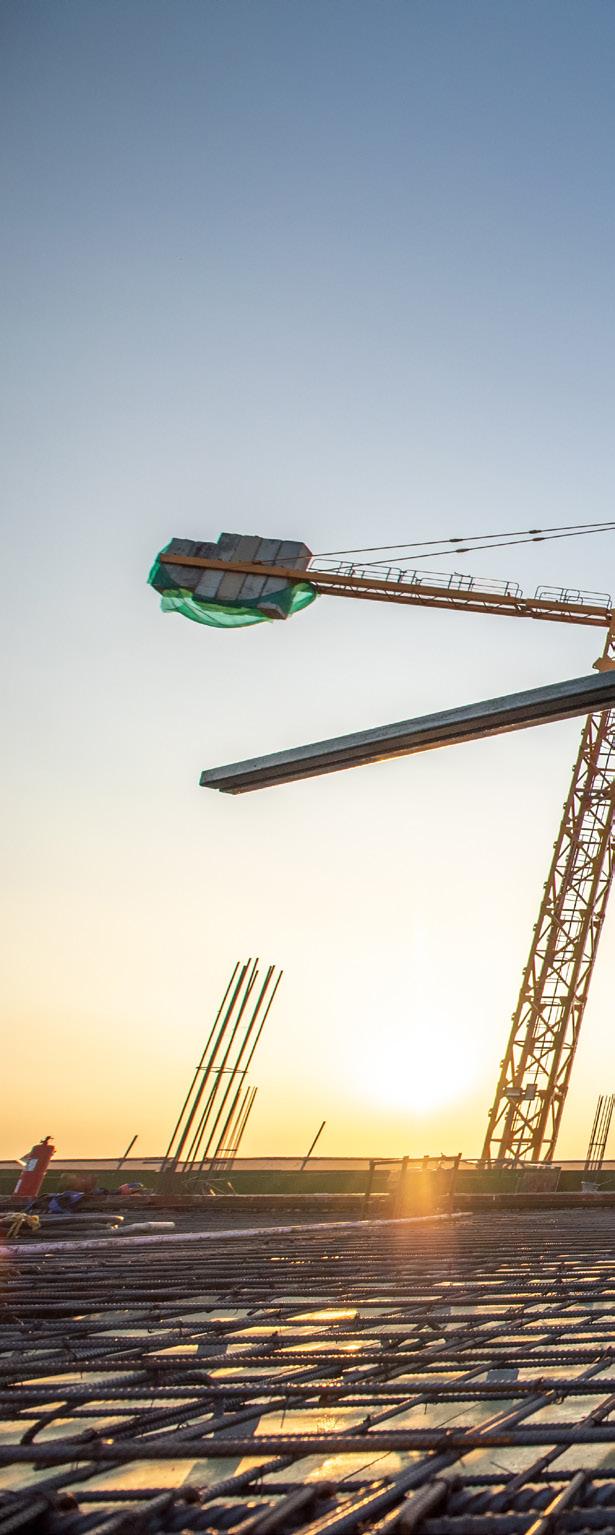INDEPENDENT TARIFF STUDY

February 2025


February 2025
As of February 2025, the United States has implemented several significant tariff changes poised to affect international trade dynamics.
These adjustments aim to regulate imports, protect domestic industries, and address global trade complexities. Beginning on March 12, 2025, a new 25% tariff will be imposed on all steel and aluminum imports, including those from European Union (EU) countries.
This measure revokes earlier exemptions, applying to both primary metals and derivative products.

In addition to the steel and aluminum tariffs, the updated policy includes other changes affecting trade with specific countries:
A 25% tariff on all imports, with a 10% tariff specifically targeting energy products from Canada.
Continued 10% tariff on imports, with steel tariffs rising to 25% and aluminum tariffs also increasing to 25%, applied to all foreign suppliers.
These changes will raise the average U.S. effective tariff rate to approximately 7.9%, indicating a more protectionist approach to international trade. The 25% tariffs on steel and aluminum are part of a reinstatement or escalation of previous measures under Section 232, highlighting a continued shift in trade policy.
Industry reactions to these tariffs have been varied, with different sectors experiencing varying degrees of impact. Interviews conducted by IPS with national specialty contractors, regional contractors, and both national and international suppliers revealed that many businesses are already facing project delays and cancellations.
National specialty contractors, in particular, are experiencing increased costs and longer timelines.
International suppliers expect added customs clearance costs, potentially increasing shipping transit times by up to 50%. Industries reliant on steel and aluminum are grappling with rising material costs, which will elevate the overall price of imported machinery.
These changes are expected to increase costs for equipment imported from Europe, leading to delays as manufacturers adjust to the new tariffs.

The construction industry is facing similar challenges, especially steel components. Structural steel prices are projected to rise due to the new 25% tariff on steel imports, potentially causing supply shortages if domestic mills cannot quickly meet increased demand.
Contractors are implementing mitigation strategies, such as changing structural steel designs to align with the current domestic supply. IPS, for example, has used this approach to mitigate delays in critical projects where structural steel was a limiting factor. Strengthening relationships with domestic producers is another strategy to ensure prompt deliveries despite tariff-induced challenges
Steel fasteners, essential components in many construction projects, will also be affected, particularly those sourced from China. The reduced importation of steel studs from China is expected to increase reliance on U.S.-produced materials, adding pressure on domestic production.
Gypsum wallboards, used in drywall construction, will experience minimal impact from the new tariffs. The U.S. primarily relies on domestic production for gypsum board demand, with imports accounting for only about 3.4% of the total supply. Given the minimal reliance on imports, the tariffs are unlikely to affect the price or availability of gypsum wallboard. However, IPS has been in discussions with national partners to ensure sufficient inventory to meet project needs and avoid potential delays

Beyond steel and aluminum, other construction materials are also likely to be affected by these new tariffs, especially in major U.S. industrial construction projects.
Although not specifically targeted by the new tariffs, the rise in global shipping costs and other

indirect impacts of U.S. trade policies could drive up prices. Copper is crucial in electrical and mechanical systems, so any price increases will significantly affect large-scale industrial construction costs.
The new tariffs on Canada and Mexico could affect cement availability, leading to supply shortages and increased costs for large-scale construction projects, particularly in industrial and commercial sectors.
Continued pressure on trade relations with Canada could result in higher prices for lumber, further compounding construction costs.
These materials rely on steel and aluminum and are essential for producing everything from cranes to bulldozers. The 25% tariff on steel and aluminum will increase the prices of these machines, resulting in higher project costs and potential delays in procurement.
Recognizing the potential disruptions these tariffs could cause, IPS has proactively implemented several key mitigation strategies:
Adjusting procurement timelines:
IPS recommends that clients allow an added 50% transit lead time on international shipments to minimize unforeseen delays and ensure critical materials are available when needed.
Strengthening relationships with domestic suppliers:
By enhancing partnerships with domestic suppliers for materials such as steel, aluminum, and structural components, IPS ensures a more reliable supply chain, reducing the risk of shortages and managing material costs despite tariff increases.
Monitoring global supply chains:
IPS carefully watches global supply chains to stay ahead of any added tariff announcements or trade policy shifts, allowing for quick and effective responses to emerging challenges.
Coordinating with national partners:
IPS maintains close communication with national partners in the gypsum wallboard sector to ensure robust inventory levels and swiftly address potential supply disruptions.

The recent U.S. tariff updates are poised to significantly affect several sectors, particularly industrial construction. Key materials such as steel, aluminum, copper, cement, lumber, and machinery are expected to face higher costs, longer delivery timelines, and potential supply shortages. IPS, through interviews with industry players and the implementation of proactive mitigation strategies, is already adjusting to these challenges. Moving forward, businesses, contractors, and suppliers must remain flexible and informed, adjusting procurement strategies, strengthening relationships with domestic partners, and staying ahead of the evolving trade landscape. With continued uncertainty in international trade policy, it is crucial to plan and build resilient supply chains that can withstand these shifts.